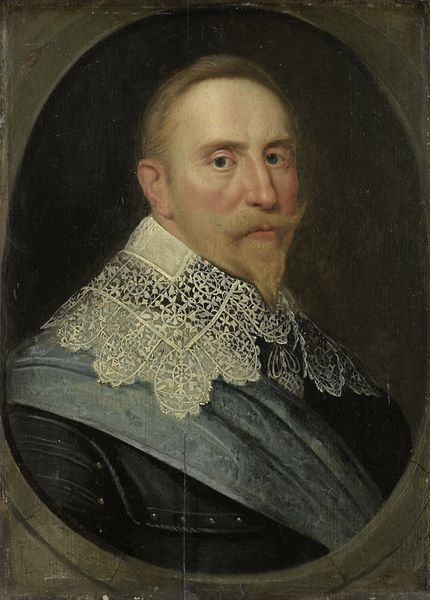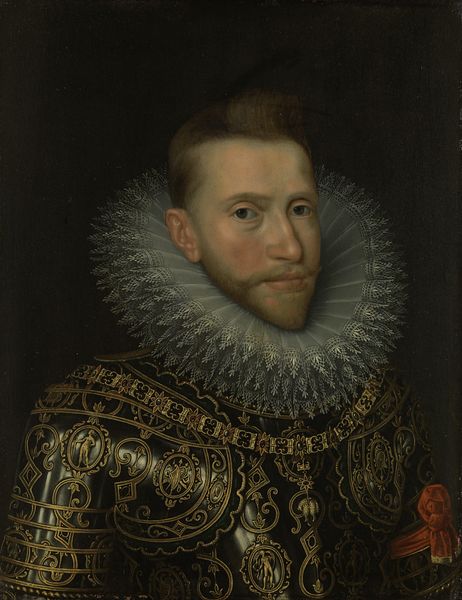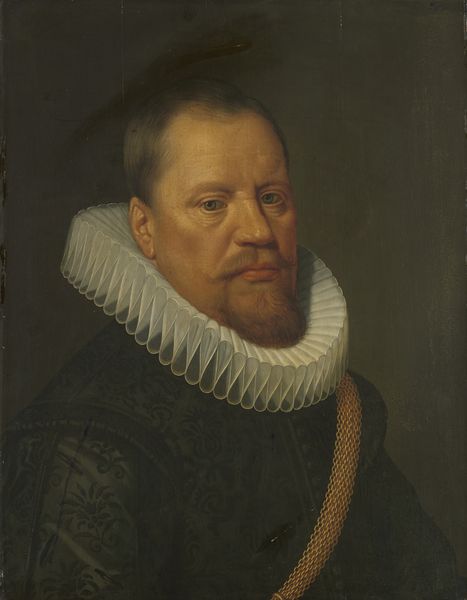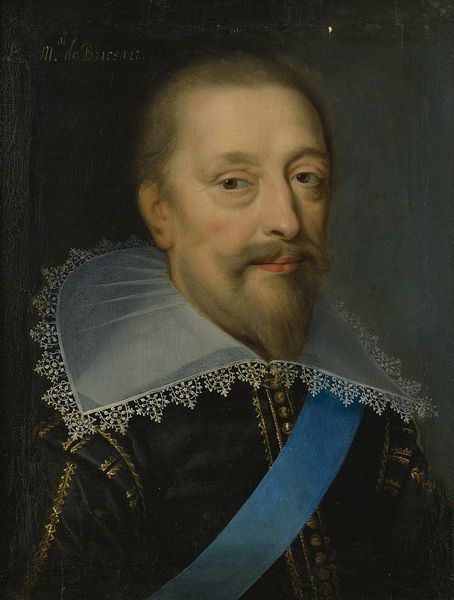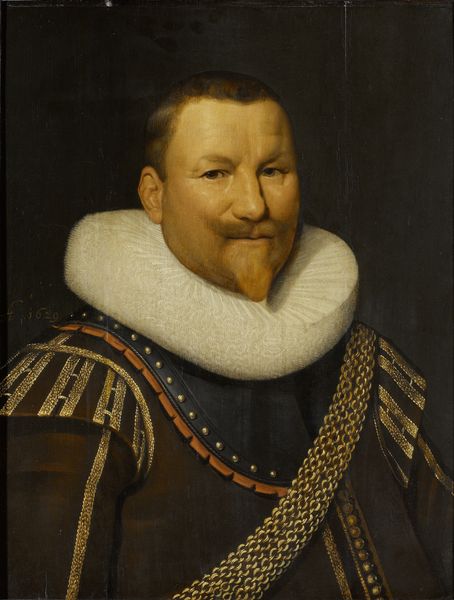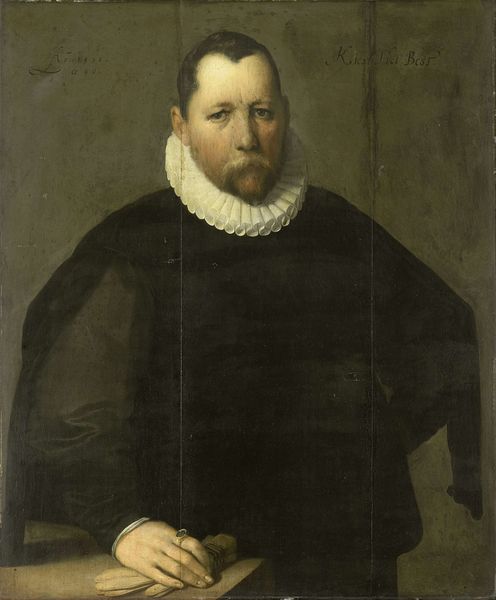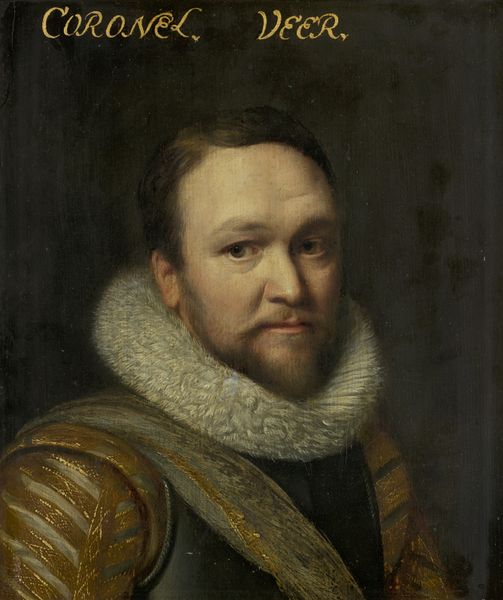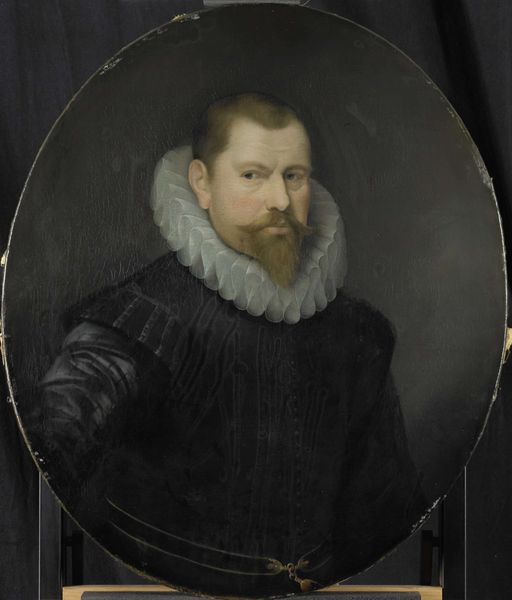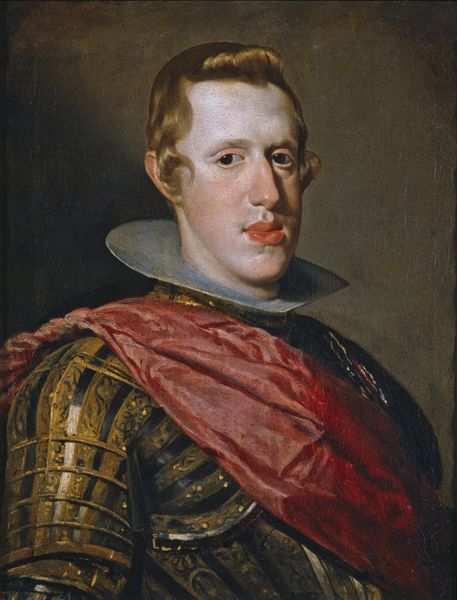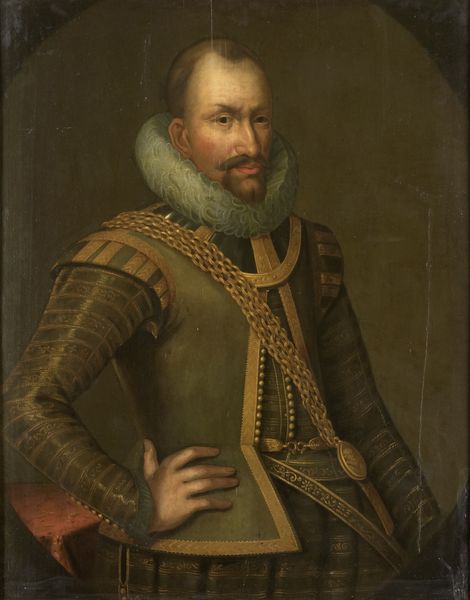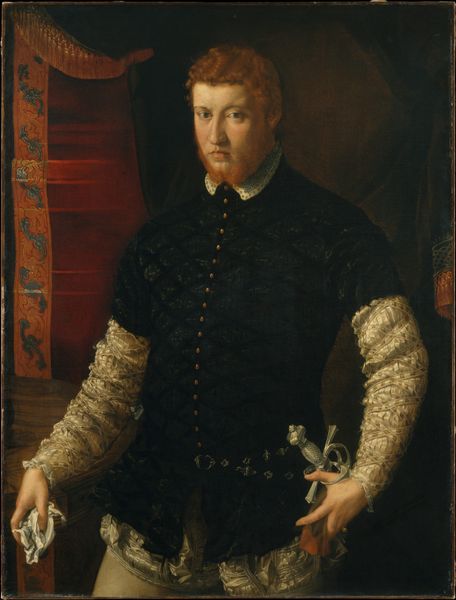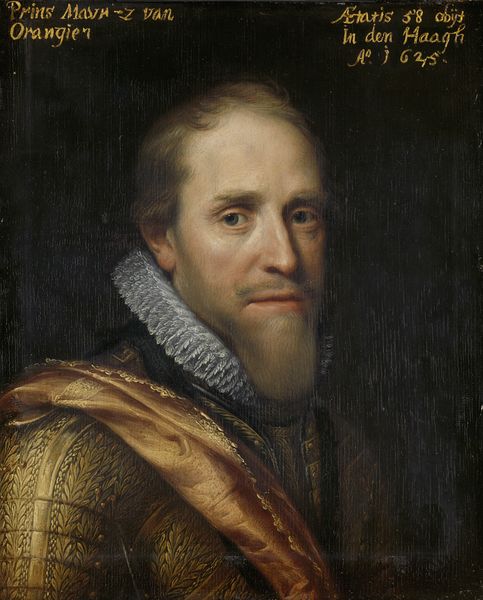
Portrait of Gustav II Adolf (1594-1632), King of Sweden after 1633
0:00
0:00
oil-paint
#
portrait
#
baroque
#
oil-paint
#
oil painting
#
history-painting
Dimensions: support height 69 cm, support width 54.8 cm, outer size depth 7.5 cm
Copyright: Rijks Museum: Open Domain
Curator: This portrait, residing here at the Rijksmuseum, is attributed to Michiel Jansz. van Mierevelt. Painted after 1633, it depicts Gustav II Adolf, the King of Sweden who died in 1632. Editor: It has this somber air, doesn’t it? Almost ghostly with the stark light against the dark backdrop, though regal with that detailed lace collar and draped sash. It feels very… deliberate in its presentation. Curator: Deliberate is a great word. The work showcases the king not long after his death and it is primarily oil on canvas. The precision of the lace and the sheen of the sash speaks volumes about the material wealth associated with kingship. Editor: Exactly. Look at that lace, its making involved an intense amount of labor. A whole segment of the population, primarily women, would have dedicated their lives to its creation. It reflects not just royal wealth but also the broader system of power that supported it, with a lot of craftmanship behind. And gold thread too! It is all made by women, yet worn and leveraged as power by a man in charge of a military dictatorship. Curator: And consider the context: Mierevelt, known for his portraits, likely never even met the King. The painting, therefore, relies heavily on visual conventions and perhaps other portraits, turning Gustav into a representation, almost a brand. The material qualities of the pigment contribute to this impression as well; the paint seems carefully applied. Editor: That touches on something vital. We're seeing a constructed image, propaganda even, where visual signifiers of power overshadow the actual individual. After Gustav's death, Sweden needed a strong figurehead, and the painting presents that despite the reality. It also tells about the baroque period; an attempt to show that even through arts Sweden should thrive. Curator: Precisely. I wonder what processes would Mierevelt have chosen to amplify those concepts and achieve this likeness... And think of how a copy of a painting like this helped disseminate political messaging. Editor: It underscores the crucial role art played in constructing and reinforcing authority in that period. Looking at it today allows us to question those constructions and their consequences. I walk away seeing not a person, but the emblem of empire building and an intense abuse of the system. Curator: An empire carefully crafted and preserved. Food for thought!
Comments
No comments
Be the first to comment and join the conversation on the ultimate creative platform.
